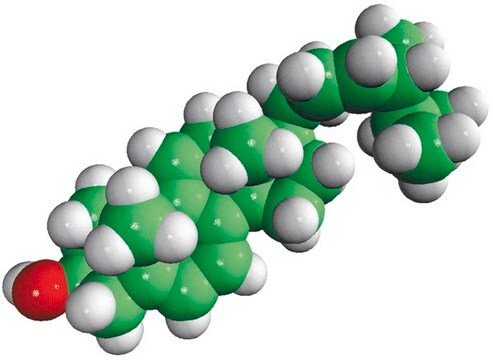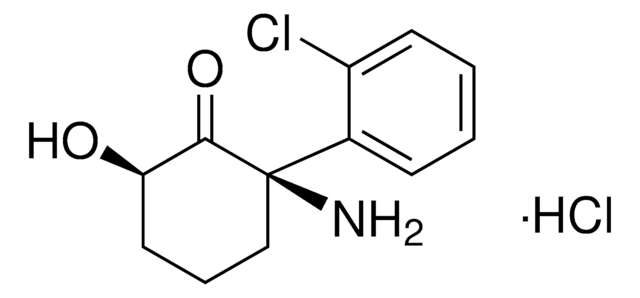Wichtige Dokumente
E2634
Ergosta-5,7,9(11),22-tetraen-3β-ol
~96% (HPLC)
Synonym(e):
Dehydroergosterol
Größe auswählen
Größe auswählen
About This Item
Empfohlene Produkte
Assay
~96% (HPLC)
Qualitätsniveau
Lagertemp.
−20°C
SMILES String
[H][C@@]1(CC[C@@]2([H])C3=CC=C4C[C@@H](O)CC[C@]4(C)C3=CC[C@]12C)[C@H](C)\C=C\[C@H](C)C(C)C
InChI
1S/C28H42O/c1-18(2)19(3)7-8-20(4)24-11-12-25-23-10-9-21-17-22(29)13-15-27(21,5)26(23)14-16-28(24,25)6/h7-10,14,18-20,22,24-25,29H,11-13,15-17H2,1-6H3/b8-7+/t19-,20+,22-,24+,25-,27-,28+/m0/s1
InChIKey
QSVJYFLQYMVBDR-CMNOFMQQSA-N
Allgemeine Beschreibung
Anwendung
Signalwort
Warning
H-Sätze
P-Sätze
Gefahreneinstufungen
Carc. 2 - STOT RE 2
Lagerklassenschlüssel
11 - Combustible Solids
WGK
WGK 2
Flammpunkt (°F)
Not applicable
Flammpunkt (°C)
Not applicable
Zulassungslistungen
Zulassungslistungen werden hauptsächlich für chemische Produkte erstellt. Für nicht-chemische Produkte können hier nur begrenzte Angaben gemacht werden. Kein Eintrag bedeutet, dass keine der Komponenten gelistet ist. Es liegt in der Verantwortung des Benutzers, die sichere und legale Verwendung des Produkts zu gewährleisten.
Hier finden Sie alle aktuellen Versionen:
Besitzen Sie dieses Produkt bereits?
In der Dokumentenbibliothek finden Sie die Dokumentation zu den Produkten, die Sie kürzlich erworben haben.
Kunden haben sich ebenfalls angesehen
Unser Team von Wissenschaftlern verfügt über Erfahrung in allen Forschungsbereichen einschließlich Life Science, Materialwissenschaften, chemischer Synthese, Chromatographie, Analytik und vielen mehr..
Setzen Sie sich mit dem technischen Dienst in Verbindung.








